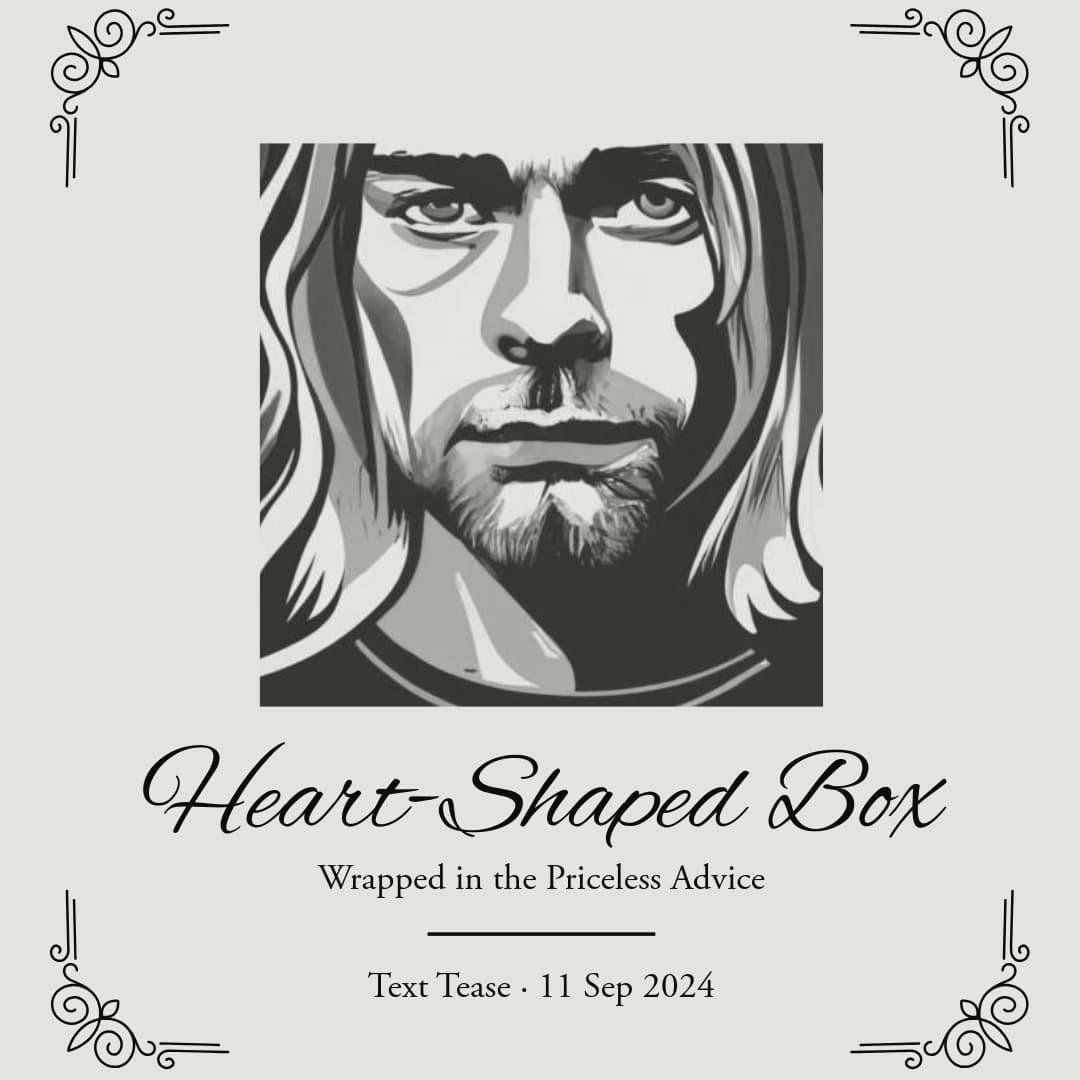
Nirvana Heart-Shaped Box Shirt – Wrapped in the Priceless Advice
Share
It was early 1993, and the Pacific Northwest felt like a place frozen in gray, the sky heavy with rain, as if holding back something darker. Kurt Cobain sat alone in his Olympia home, shrouded in a silence that seemed to mirror the emptiness growing inside him. He was no longer just a musician—he had become a reluctant icon, the voice of a generation that he never asked to speak for. The roar of the crowds, once a source of adrenaline and euphoria, now felt hollow, like a distant echo. He couldn’t fake it anymore. As he wrote, the guilt and frustration clawed at him, the weight of his fame suffocating his joy, his passion dimming to a mere flicker.
In that haze of disillusionment, “Heart-Shaped Box” began to take shape. It wasn’t just a song—it was a scream trapped beneath layers of distortion, raw and haunting. The song echoed the tension in Cobain’s life, the struggle between love and torment, creativity and exhaustion. He poured all of it into those first chords, the haunting riff that would later anchor one of Nirvana’s most iconic tracks. It was as if Cobain, with every note, was trying to reach for something just out of grasp—something pure, something real, something he feared might already be lost.
Recording in the Shadow of Fame
By early 1993, Cobain’s relationship with his own music had become a battlefield. The weight of expectation crushed down on him—the crowds that once cheered his name now felt like chains, binding him to a persona he could no longer relate to. His health, his relationships, and his creative spark were fraying. Still, “Heart-Shaped Box” came to life in those moments of deep reflection, its lyrics cryptic yet cutting. "Throw down your umbilical noose so I can climb right back"—lines that would haunt listeners, much like Cobain’s existence haunted him.
Steve Albini’s original mix of the song was raw and jagged, a reflection of Cobain’s need for authenticity, but something was missing. Scott Litt would later remix it, bringing Cobain’s voice to the surface, ensuring the song hit with the emotional depth that Cobain had poured into it.
A Surrealist Vision in Sound and Sight
When the song was finally ready for the world, Cobain’s vision didn’t stop with the music. He collaborated with Anton Corbijn to create a video that would push the boundaries of what fans expected from Nirvana. The imagery was unsettling—a crucifixion, fetuses hanging from trees, and flowers blooming in a bizarre juxtaposition of life and death. Much like the song itself, the video was both dreamlike and nightmarish, a surrealist reflection of Cobain’s fractured psyche.
“Heart-Shaped Box” quickly became one of Nirvana’s most iconic songs, a deeply personal track that exposed the rawness of Cobain’s inner world. It was more than a grunge anthem—it was a window into a mind struggling with the weight of fame, love, and the darkness that always seemed to be lurking just beneath the surface.

A Shirt That Embodies the Story
The Nirvana Heart-Shaped Box Shirt tries to tell the story that Cobain left behind—one filled with tension, yearning, and love, much like his final note. It’s not just a design; it’s a way of capturing the emotion that pulsed through “Heart-Shaped Box”—the battle between adoration and despair, the beauty and the burden. This shirt isn't trying to sell an era—it’s trying to embody a moment, a fragment of Cobain’s inner world, as elusive and powerful as the man himself.
Text Tease understands that it’s more than just a tribute—it’s a reminder that his story didn’t end with those words. It's about the connection we all shared through his music, a way of remembering that, while his light burned out, the impact remains.
